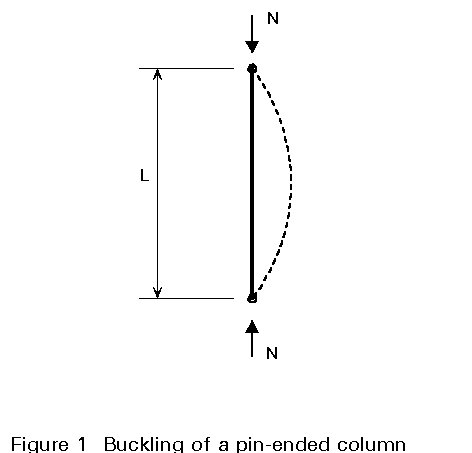Elastic instability modes
Read LectureTo introduce the concept of effective length and to describe its application in the design of practical columns.
Worked Example 7.7: Effective lengths
For pin-ended columns, the buckling length equals the actual length. Such columns are, however, relatively rare in practice. Predicting strength under other than pin-ended conditions can be achieved by using the notion of effective length (LE).
LE is the length of a similar pin-ended column (of the same section) which has the same buckling load as the column being considered. Approximate values for effective length, which can be used in design, are given for a wide range of end-restraint conditions.
For the determination of the elastic Euler critical buckling load
it is assumed (as per Concepts of Stable and Unstable Elastic Equilibrium lecture) that both ends of the column are pinned (see Figure 1). Practical end connections on real columns, however, will often not behave in this manner and this will, therefore, significantly affect the buckling load. Two aspects of the end condition must be considered:

The usual design approach consists of reducing the practical case under consideration to an equivalent pin-ended case by means of an effective length factor K.
Read more